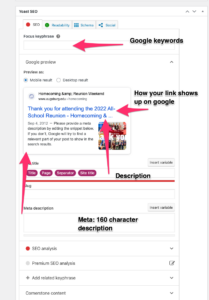small photobox
-
Log in to your WordPress dashboard and navigate to “Appearance” in the sidebar menu.
-
Click on “Customize” to open the WordPress theme customizer page. You should see a preview of your website on this page.
-
Locate and click on the “Additional CSS” tab or section.
-
A text box will appear where you can type or paste your custom CSS code, in this case it is: .photo-box-widget {max-width: 500px;} . As you add the code, the changes will be reflected in the preview area on the right-hand side.
-
Once you’re satisfied with the changes, click on the “Save Changes” button to save the CSS to your site.
-
Visit your website to confirm that the changes have been applied successfully.



